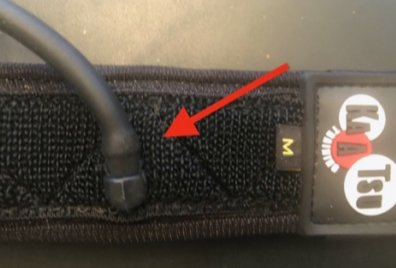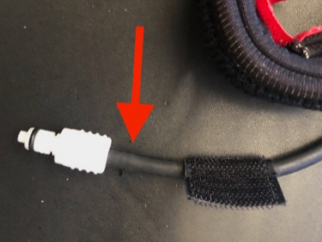For what? quality sleep, insomnia, jet lag, recovery
 Antonio Argüelles is a two-time Guinness World Record holder and the oldest man to achieve the Oceans Seven.
Antonio Argüelles is a two-time Guinness World Record holder and the oldest man to achieve the Oceans Seven.Oceans Seven is the swimming world's equivalent of the Seven Summits or the solo crossing of seven major iconic channels around the world:
* English Channel between England and France
* Strait of Gibraltar between Spain and Morocco
* North Channel between Scotland and Northern Ireland
*Molokai Channel between Molokai and Oahu in Hawaii
* Catalina Channel between Catalina Island and Los Angeles, California
* Cook Strait between North Island and South Island in New Zealand
* Tsugaru Channel between Hokkaido and Honshu in Japan.
Argüelles, a 62-year-old entrepreneur, author and speaker from Mexico City, not only uses KAATSU Cycle sets to help him recover from his intense and lengthy workouts, but also to enhance his sleep. The repeated, gentle, temporarily brief, progressively incremental inflation of the KAATSU AirBands - followed by 5-second breaks of deflation in the AirBands - while you sit comfortably or maintain a relaxed position without doing exercise - serves as a catalyst to activate your parasympathic nervous system.
You can gently stretch your upper body or do neck rotations at the KAATSU AirBands repeatedly inflate and deflate. This helps relax the vascular tissue in your neck and upper body, further relaxing you.
Additionally, the temporary engorgement of blood in your surface capillaries slightly warms up your arms. When you remove the AirBands from your arms, then your body starts to cool down - another trigger for sleep.
Argüelles explains his data that is regularly generated by his WHOOP device. "Over the last four days, I have slept almost the same amount of time between 4.5 hours and 5 hours. But I lent my KAATSU device [to a friend] for three days - that non-use correlates to the red data. But I received my KAATSU equipment back yesterday. You can see my usual outstanding results in yellow."
KAATSU users like Argüelles and those who travel frequently use their KAATSU equipment with the following standard KAATSU protocols to reduce the effects of jet lag, battle insomnia, and improve their quality of sleep. These are the important points regarding KAATSU use before, during and after airplane travel - or about an hour before going to bed in the case of dealing with insomnia - or seeking improved sleep:
Key Points:
›› Be very well-hydrated before doing KAATSU Cycles in the airplane or before takeoff at the airport or within an hour of going to bed in order to help reduce your jet lag.
›› Do KAATSU Cycles in your hotel room (or home) before going to bed on your first few evenings in your new location or on your return back home.
›› Always focus on doing KAATSU Cycles, starting in the lowest pressures. You may gradually increase if you wish, but it is not necessary.
›› Be conservative with your pressure. The effects will still be evident despite a lower-than-normal pressure.
›› There is no need to go to failure with these Sleep Quality protocols; the goal is to become relaxed and get your parasympathetic nervous system activated.
›› Always follow the standard KAATSU safety protocols (e.g., always have Capillary Refill Time faster than 2- 3 seconds with absolutely no occlusion. You should experience absolutely no numbness in your feet or legs, and see a deeper (pinker or redder) skin color than normal in your limbs. You may also see some slight or pronounced vein distention (i.e., your veins pop out slightly).
›› Ideally, do your KAATSU Cycles before you board the airplane or before going to bed when you return home.
›› Never do the KAATSU Constant mode while flying.
›› Use the arm bands for the optimal effect, but you can also subsequently use the leg bands to complete the entire insomnia protocol.
Upper Body Jet Lag or Insomnia Movements:
1. Place the KAATSU Air Bands on your upper arms.
2. Do 2-4 KAATSU Cycles, ideally within 30-60 minutes of boarding the airplane.
3. You can do all or any the following KAATSU exercises while sitting in your seat during flight:
* Forward Shoulder Rolls
* Backward Shoulder Rolls
* Head Rotations
* Tricep Muscle Stretches
* Deltoid Muscle Stretches
* Arm Rest Press Downs
* Isometric Contractions
4. Do 20-30 Forward Shoulder Rolls in a steady motion while your KAATSU Air Bands are inflated in the KAATSU Cycle mode. Breathe deeply. Relax while your KAATSU Air Bands are deflated. Repeat as desired.
5. Do 20-30 Backward Shoulder Rolls in a steady motion while your KAATSU Air Bands are inflated in the KAATSU Cycle mode. Breathe deeply. Relax while your KAATSU Air Bands are deflated. Repeat as desired.
6. Slowly roll the head forwards and backwards. Then slowly roll your head to the left and then to the right. Then slowly roll your head in a clockwise direction and then in a counterclockwise direction while your KAATSU Air Bands are inflated in the KAATSU Cycle mode. Breathe deeply. Relax while the KAATSU Air Bands are deflated in the KAATSU Cycle mode.
Note: Skip this exercise if rolling your head forwards, backwards, left, right, clockwise or counterclockwise causes dizziness.
7. Stretch your triceps muscles on your left and right arms while your KAATSU Air Bands are inflated in the KAATSU Cycle mode. Breathe deeply. Relax while the KAATSU Air Bands are deflated in the KAATSU Cycle mode.
8. Stretch your deltoid muscles on left and right shoulders while your KAATSU Air Bands are inflated in the KAATSU Cycle mode. Breathe deeply. Relax while the KAATSU Air Bands are deflated in the KAATSU Cycle mode.
9. Do isometric exercises like placing both hands on your arm rests and press down for a few seconds while contracting your muscles. Rest and relax, then repeat.
10. Place the palms of your hands together and push your hands together for a few seconds. Then, rest, relax and repeat.
11. Grasp the fingers of your hands and pull your hands apart for a few seconds. Then rest, relax and repeat.
12. Stretch your upper body or torso as you desire and are able.
Lower Body Jet Lag or Insomnia Movements:
Note: Doing KAATSU on your legs is much easier in a business or first class seat and most difficult - or frankly impossible - while in the middle seat in economy class.
1. Place the KAATSU Air Bands on your upper legs.
2. Do 2-4 KAATSU Cycles, ideally within 30-60 minutes of boarding the airplane.
3. You can do all or any the following KAATSU exercises while sitting in your seat during flight:
* Heel Raises
* Leg Extensions
* Inward Leg Squeezes
* Outward Leg Squeezes
* Isometric Contractions
4. Slowly do 10-20 Heel Raises in a steady motion while your KAATSU Air Bands are inflated in the KAATSU Cycle mode. Breathe deeply. Relax while your KAATSU Air Bands are deflated. Repeat as desired.
5. Slowly do 10-15 Leg Extensions in a steady motion while your KAATSU Air Bands are inflated in the KAATSU Cycle mode. Breathe deeply. Relax while your KAATSU Air Bands are deflated. Repeat as desired.
6. Place your hands on your inner thighs and slowly push outwards as you push your legs inwards against the force of your hands while the KAATSU Air Bands are inflated in the KAATSU Cycle mode. Breathe deeply. Relax while the KAATSU Air Bands are deflated. Repeat the Inward Leg Squeezes as desired.
7. Place your hands on your outer thighs and slowly push inwards as you push your legs outwards against the force of your hands while the KAATSU Air Bands are inflated in the KAATSU Cycle mode. Breathe deeply. Relax while the KAATSU Air Bands are deflated. Repeat the Outward Leg Squeezes as desired.
8. Repeatedly contract and then relax your upper leg muscles (quadriceps and hamstrings) while the KAATSU Air Bands are inflated in the KAATSU Cycle mode.
A few of these insomnia movements are demonstrated below - that can also be used in the office when you are under stress. These same movementss - while the KAATSU Cycle is running - can be easily and conveniently done in the airport, airport lounge or at your office or home. They work to relieve stress, induce sleep and improve sleep quality, and get some increased blood circulation during the day when you are sitting and being sedentary all day long.
Copyright © 2014 - 2021 by KAATSU Global














